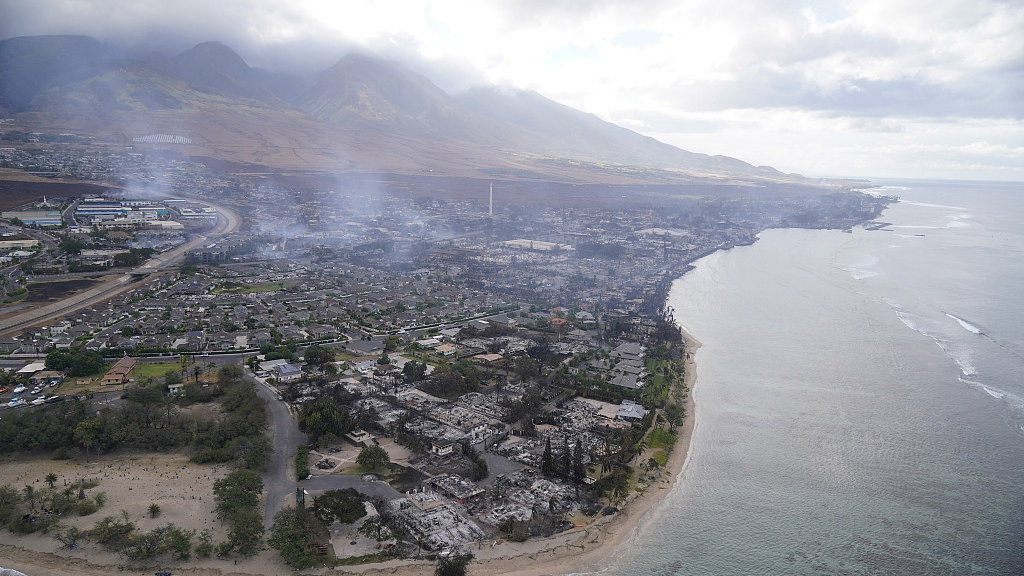As the plumes of smoke continue to rise from the scorched earth, the beautiful island of Maui in Hawaii finds itself grappling with an unprecedented catastrophe. The confirmed death toll from the wildfires has reached a harrowing 67, a significant and tragic increase from the initial 55 reported. Each number tells the tale of families shattered, dreams destroyed, and lives upended.
Maui County’s press release paints a vivid picture of the relentless struggle against the blaze, detailing ongoing firefighting operations in key affected areas such as Lahaina, Pulehu/Kihei, and the scenic Upcountry Maui. These regions, which are intrinsic to the island’s allure and economy, have been under siege from the flames.
To understand the magnitude of the situation, one must consider the efforts put in place. Reinforcements have arrived from Honolulu. An additional 21 firefighters from the Honolulu Fire Department, supplemented by seven supervisory personnel and armed with four vehicles, have been dispatched to bolster the existing firefighting contingents. This cross-island assistance speaks volumes about the gravity of the wildfire and the united front the Hawaiian community is presenting in response.
Further demonstrating the all-hands-on-deck approach, a nine-member search-and-rescue team is now on the ground in Maui. Their mission, though fraught with challenges and unpredictabilities, will be to find and assist those who may still be trapped or in immediate danger.
The wildfire’s impact isn’t just restricted to the residents. Tourism, which serves as the lifeblood of Maui’s economy, has felt the brunt as well. Over a single day, twenty-five shuttle buses were pressed into service, transporting a staggering 1,200 tourists to Kahului Airport, the island’s primary air hub. In a clarion call to the scale of evacuation, a whopping 14,900 visitors took to the skies, departing Maui, seeking safety, and carrying with them tales of an island paradise under siege.
Maui’s commitment to its residents and visitors is evident in the swift measures being deployed. Six emergency shelters have been established, providing refuge to those who’ve lost their homes or are unable to return to them due to the fire. In a testament to the island’s spirit of Aloha, distribution drives are being organized. On Friday, the iconic Ritz-Carlton, Kapalua, will turn into a supply hub. Residents can expect to receive food, water, essential supplies, and clothing. Recognizing the most vulnerable, there will also be a limited distribution of baby products, ensuring that the island’s youngest inhabitants aren’t left wanting.
However, it’s not just the immediate challenges that are daunting. Reflecting on the larger implications of this disaster, Hawaii’s Governor, Josh Green, commented on the sheer scale of the calamity. In his words, this wildfire is “likely the largest natural disaster in Hawaii state history.” His prognosis for recovery is sobering. The path to healing, rebuilding, and reclaiming the island’s spirit will be long, demanding perseverance, resources, and an undying commitment to Maui’s legacy.
The historic town of Lahaina offers a haunting vignette of the devastation. A popular tourist haven and a site of great historical significance (once serving as the capital of the Kingdom of Hawaii), Lahaina has been decimated. As per Governor Green, the inferno has likely razed “over a thousand buildings” in this beloved town alone.
Visual evidence of this can be seen in a video shared by Governor Green. As the footage unspools, viewers are confronted with the charred remnants of what was once a bustling, vibrant community. Buildings, rich with history and stories, now stand as skeletal reminders of nature’s fury.
It’s crucial, amid the despair, to recognize and appreciate the resilience of the human spirit. Communities, both within and beyond Hawaii, are rallying. Financial aid, resources, and manpower are pouring in, with many seeing this not just as a local catastrophe but a global one. After all, Hawaii, with its lush landscapes, beaches, and unique culture, belongs to the world.
The road ahead is undoubtedly challenging. The physical reconstruction of properties, infrastructure, and vital services is just one dimension. There’s the emotional and psychological healing that needs to be addressed. Many residents have lost everything – homes, possessions, memories, and tragically, loved ones.
Yet, if there’s one thing that history has repeatedly shown, it’s the indomitable spirit of communities facing adversities. Maui, with its rich tapestry of cultures, traditions, and natural beauty, will rise again. It will require time, effort, unity, and global support, but the island will rebuild, and its spirit will remain unbroken.
As the world watches, prays, and supports, Maui’s story will evolve from one of devastation to one of rebirth and resilience. The Aloha spirit, which embodies love, peace, compassion, and a mutual understanding of respect, will guide this journey, ensuring that Maui remains a paradise, not just in its landscapes but in its indomitable spirit and heart.
Read More:
